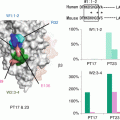Fig. 1
Phase III trial for Japanese population. Box plots of platelet counts of patients who met primary response are shown in this figure. The time to response is around 4–8 weeks after the administration of rituximab
Based on the results in these trials, rituximab is now considered as one of the standard treatment choices for ITP in the guidelines, and medication approval is being processed in Japan.
3 Statements in the National Guidelines
The statement on the use of rituximab for ITP is slightly different between guidelines as below (Table 1).
Table 1
Comparison of guidelines for ITP
International consensus report | ASH | BCSH | Japan | |
|---|---|---|---|---|
First line | Corticosteroids IVIG | Corticosteroids IVIG | Corticosteroids IVIG | Corticosteroids |
Second line | Splenectomy | Splenectomy | Splenectomy | Splenectomy |
TPO-R agonists | TPO-R agonists | High-dose steroids | ||
Rituximab | Rituximab | IVIG | ||
Immunosuppressants | Danazol | |||
Danazol | Immunosuppressants | |||
Third line | TPO-R agonists | IFN-α | TPO-R agonists | |
Rituximab | Immunosuppressants | |||
MMF | Rituximab | |||
Plasmapheresis |
In an international consensus report published in 2010, rituximab is listed as one of the second-line treatment options [10]. This report shows no preference for a particular therapy in the second-line options. The American Society of Hematology (ASH) evidence-based practice guideline published in 2011 has similar statements, which suggests rituximab be considered for patients at risk of bleeding who have failed one line of therapy such as corticosteroids, IVIG, or splenectomy (grade 2C) [11].
On the other hand, guidelines for ITP issued by the British Committee for Standards in Haematology (BCSH), General Haematology Task Force in 2003, consider rituximab as one of the third-line treatments, and splenectomy is the second-line treatment. The Japanese reference guide for the treatment of ITP published in 2012 also states rituximab is the third-line treatment since rituximab is not approved in Japan [12].
The difference between guidelines is mainly on whether rituximab can be used before the consideration of splenectomy. In fact, there has been no randomized trial to compare the efficacy of splenectomy versus rituximab as a second-line therapy, and therefore choosing an appropriate option is challenging. The response rates with splenectomy are generally reported to be higher and more durable than with rituximab, while many clinicians and patients prefer to avoid splenectomy since a late spontaneous remission can occur, and splenectomy is relatively invasive. We need to balance the risks and benefits of these options on a case-by-case basis.
4 How to Use Rituximab
Most of the studies explained above administered rituximab doses of 375 mg/m2 IV weekly for 4 weeks. This is considered as the “standard” dose, though at the current time the best regimen of rituximab for ITP patients is yet unknown. Lower doses (100 mg IV weekly for 4 weeks) may also be effective, although associated with a longer time to response [13]. Due to the potential toxicity and expense of this medication, further studies are required to determine the optimal dose.
Stay updated, free articles. Join our Telegram channel

Full access? Get Clinical Tree




